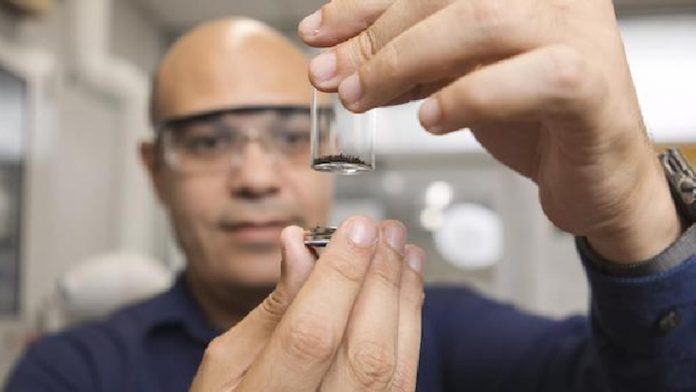A team of physicists from the University of Texas, El Paso, has developed a highly magnetic material that retains its magnetism at room temperature.
The new magnetic material is also free of high-demand rare earth elements, meaning it could be easily mass-produced.
“I was really doubting its magnetism, but our results show clearly superparamagnetic behaviour,” said Ahmed El-Gendy, senior author and physicist at the University of Texas, El Paso.
Superparamagnetism is a controllable form of magnetism where applying an external magnetic field aligns the magnetic moments of a material and magnetises it.
The results of the study, ‘Room temperature colossal superparamagnetic order in aminoferrocene-graphene molecular magnets,’ was published in Applied Physics Letters.
The potential of the magnetic material in quantum computers
Currently, quantum computers are confined to cool rooms close to absolute zero (-273°C), where particles are less likely to tumble out of their critical quantum states.
Breaking through this temperature barrier to develop magnetic materials that still exhibit quantum properties at room temperatures has long been the goal of quantum computing.
Molecular magnets are an extremely promising option for creating qubits, which are at the base of quantum information.
Magnetic materials are already used in our current computers. They are at the helm of spintronics, devices that use an electron’s spin direction in addition to its electronic charge to encode data.
Quantum computers could be next, with magnetic materials giving rise to spin qubits – pairs of particles such as electrons whose directional spins are linked on a quantum level.
Creating stable qubits
Instead of adding all the composite ingredients at once, the team synthesised the magnetic material in a series of steps.

This made it possible for the material to exhibit its magnetism at room temperature.
The sequential synthesis method sandwiched the aminoferrocene between two sheets of graphene oxide and produced a material 100 times more magnetic than pure iron.
Further experiments confirmed the magnetic material retained its properties at and above room temperature.
In their paper, the team states: “These findings open routes of room temperature long-range order molecular magnets and their potential for quantum computing and data storage applications.”
More tests of the new material will be required to see if the results can be replicated by other groups.
However, progress in this field of molecular magnets is encouraging and offers another promising option for creating stable qubits.









